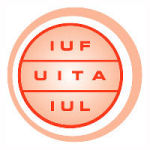New H5N1 Detection in the UK Highlights Urgent Need for Systematic Worker Protection
Posted to the IUF website 28-Apr-2006Share this article.
A case of H5N1 avian flu virus - the first since 1998 - in a UK poultry farm has again highlighted the need for employers and public health authorities to place adequate protection for poultry workers at the center of public health measures to contain the potential spread of the virus. The virus was detected at a Norfolk breeding facility, prompting the authorities to set up a surveillance area around the farm and deploy veterinarians and epidemiologists to monitor the company's 29 other facilities.
The company has stated that the most likely source of the contamination was feces from an infected fowl brought into a chicken house on a worker's shoe. Another Norfolk poultry producer told theTimes "The birds are inside so it can�t have been from a wild bird and if it was from a vehicle, where did the vehicle come from and where has it gone? The poultry industry is a huge industry here, with an enormous amount of local suppliers and distributors. The knock-on effects would be very serious but we�re hoping that we�ll come out the other side."
Some 40,000 jobs in the Norfolk area depend on the poultry industry, which also has a large tourism sector which would be hard hit by a viral outbreak.
While the company can claim compensation from the cull which is currently taking place, there are as yet no firm measures in place in the European Union to compensate workers for the impact of the H5N1 crisis which is already estimated to have caused sales to slump by up to 70% in some countries. The latest EU subsidy package, approved on April 24, covers farmers affected by demand slump, but does not extend to workers. Bringing contract and undocumented workers within the scope of compensation and public health measures will prove particularly difficult as long as current EU programs are restricted entirely to farmers.
UK press reports on the Norfolk case sounded the H5N1 alarm without drawing the connection between a worker's shoes (or company transport) as a possible vector for the spread of the virus and the need for measures for which place poultry workers at the center of prevention. Given the key location of poultry workers as possible transmission routes for the spread of the virus, and its potential mutation into a virus capable of human-to-human transmission, governments must assume full responsibility for ensuring that employers deliver adequate training, facilities and protective equipment to all industry workers, rural and urban.
